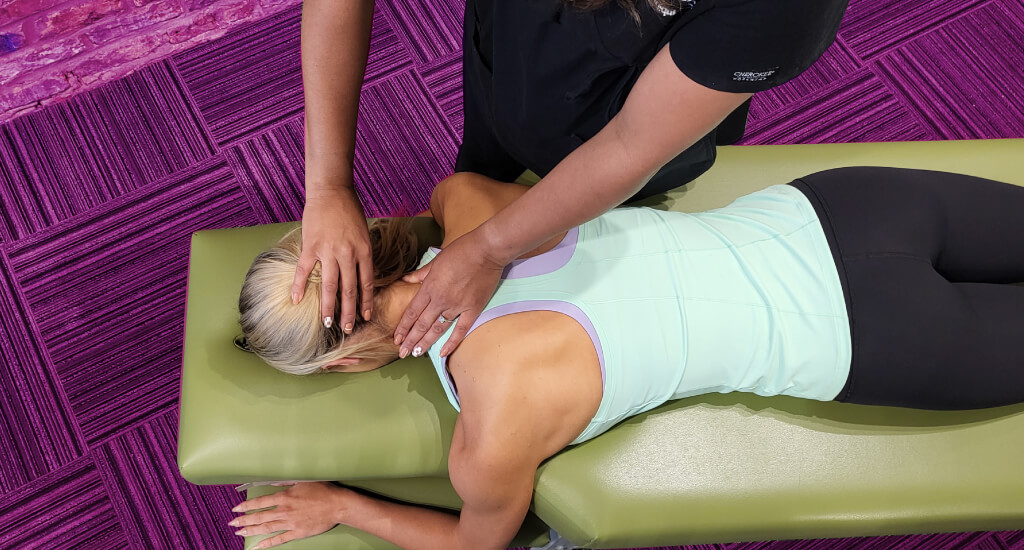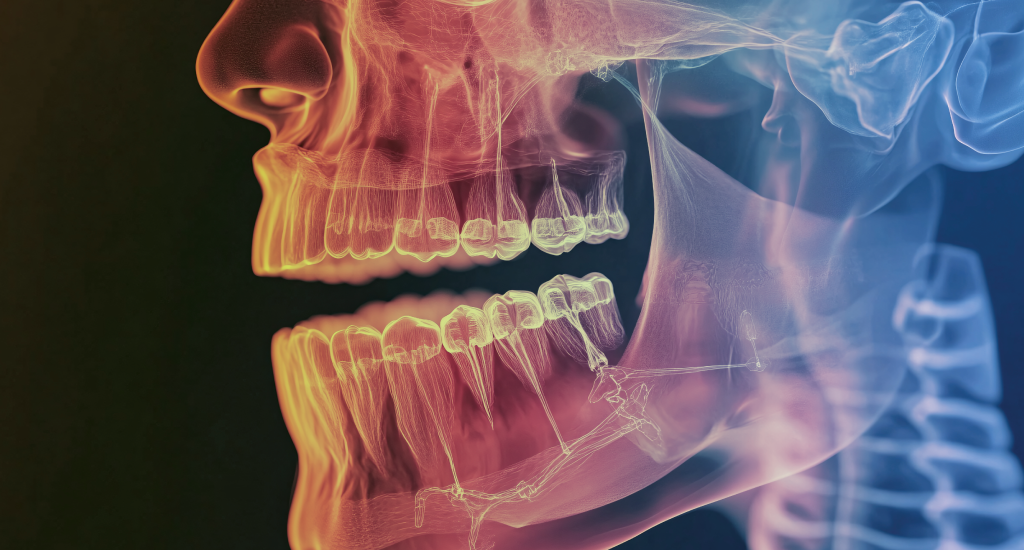
Chiropractic Jaw Adjustment for Pain Relief
Can chiropractic care help with jaw pain? Dr. Robert of Chiro One shares the top causes of jaw pain, how to prevent it, and how chiropractic can help you find relief without surgery.

Jaw pain when you chew, talk, or even try to sleep. Facial pain. Recurring headaches, Ear pain. They’re symptoms we see in our clinic every day and people usually ask about TMJ; an acronym you’ve probably heard before. But TMJ isn’t actually a disorder (stay with us – there IS a condition here, and we know your pain is real!)
TMJ stands for temporomandibular joint, the joint that connects the lower jaw (mandible) to the skull, and we have one on each side of the head (jaw.) The collection of symptoms that people commonly refer to as TMJ is actually a TMD: temporomandibular disorder. And TMD is not a singular condition, but a group of more than 30 conditions that affect the jaw joint, muscles, and surrounding structures.
Wild, right? Even some healthcare professionals are in the habit of calling the condition TMJ. For now, we’ll keep using that terminology – just to remind you you’re in the right place.
There are three main categories of TMD that cause the symptoms we know as TMJ, which is why finding out how to treat TMJ requires a thorough evaluation to understand the type of disorder you have, so we can determine the best way to treat your TMJ symptoms.
The three main categories of TMD are:
All of which can cause pain, clicking, popping, difficulty opening the mouth, headaches, ear and facial pain, and even dizziness and ringing in the ear (tinnitus.)
Common causes of TMD include:

Yes, it can be treated, though not all doctors treat TMJ. Dentists, EMT, oral/maxillofacial surgeons, ENTs, and chiropractors are all trained to treat TMJ. If you have persistent jaw pain, popping, clicking, headaches or difficulty opening your jaw, it is time to see a healthcare provider.
As to the duration of your TMJ symptoms, TMJ relief dysfunction affects everyone differently. For some, it’s a temporary issue that goes away in a week or two. For others, it’s a chronic condition; the pain can recede for months and then flare again. The patients we see are usually very eager to find the best treatment for their TMJ symptoms because the jaw affects almost everything we do – eating, talking, sleeping…chronic symptoms can greatly reduce a person’s quality of life.
TMJ flare-ups can be triggered by a variety of factors, including stress, hard or chewy foods, poor posture, and jaw injuries. Other potential triggers include dehydration, vitamin D deficiency, hormonal changes, and even certain medications.

How to treat TMJ is a complex question. Our bodies are complex, and many jaw disorders are the result of multi system causes. TMJ relief is usually found in a combination of therapies. Treatment for TMJ can include:
Physical Therapy: This includes strengthening exercises, stretching, and massage to improve jaw movement and reduce muscle tension
Lifestyle changes: Eating soft foods can help reduce stress on the jaw joint – that includes giving up gum chewing altogether
Heat/Cold Therapy: Applying heat or cold to the affected area can provide pain relief
Improving Your Posture: Good posture can help alleviate pressure on the jaw by correcting misalignments in the neck and head, which reduce muscle tension and nerve pressure
Mouthguard Devices: These can help prevent teeth grinding and clenching, which can contribute to jaw pain
Medications: NSAIDs (Nonsteroidal Anti-inflammatory Drugs) like ibuprofen or naproxen can help reduce pain and inflammation
Muscle Relaxants: These can help relieve muscle spasms and tension
Injections: Botox Injections can temporarily paralyze the muscles involved in TMJ pain, while trigger point injections can be used to help relax tight muscles.
Chiropractic care: Research has shown chiropractic care to be effective at treating TMJ pain. Chiropractic adjustments can address potential underlying issues like spinal misalignments and muscle tension to alleviate pain, discomfort, and reduced range of motionSurgery: While rarely used to treat TMJ, surgery may be considered for chronic conditions where other TMJ treatment has failed.
First, be sure to see a healthcare professional for a proper diagnosis of your pain and to rule out other conditions. They can recommend the right mix of in-office (for example, chiropractic adjustments) and at-home treatments (like heat and NSAIDs) to help you find relief.
Jaw pain and TMD can be very challenging – and very painful. Get relief by reaching out to your healthcare provider and find out how to treat your TMJ in a way that suits your symptoms and lifestyle.
Subscribe and get news, articles & offers sent right to your inbox each month.
"*" indicates required fields
By subscribing you are agreeing to the Terms and Conditions and Privacy Policy.